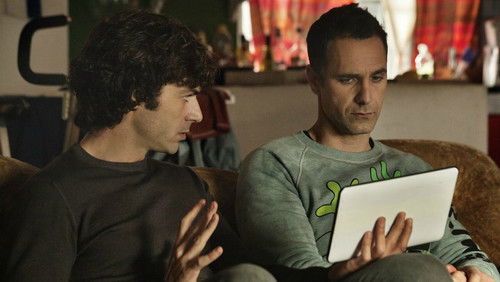Dieses obskure Objekt der Begierde (1977)
12KDieses obskure Objekt der Begierde: Directed by Luis Buñuel. With Fernando Rey, Carole Bouquet, Ángela Molina, Julien Bertheau. Recounted in flashback are the romantic perils of Mathieu, a middle-aged French sophisticate as he falls for his nineteen-year-old former chambermaid Conchita.
“I would like to begin by saying that this is one of the most bizarre films that I have ever experienced in my career as a movie buff. I have seen some twist endings, some passionately bad French films, and even some stalker films, but nothing compares to the cinematic genius that I just witnessed. Being a Bunuel u0026#39;virginu0026#39;, I didnu0026#39;t know what to expect coming into this film.u003cbr/u003eu003cbr/u003eI was ready for anything, but interestingly enough nothing will prepare you for this film. Deeply rooted in cinematic symbolism, we watch as two very interesting devises that are used to bring forth the overall theme of this film. Two devises that I have never seen used in a movie, until now.u003cbr/u003eu003cbr/u003eThe first is the obvious. Bunuel successfully uses two different actresses to play the same role of Conchita. At first I thought perhaps it was going to be one of those u0026#39;twinu0026#39; double-cross films where these two girls used this older wealthy man for all his money. I was wrong. Similar to the title of this film, this is a film about passions and desires. It divulges in the emotion of obsession, and the reaction a man can have on someone that he desperately and sexually desires. Mathieu is our possible victim in this story. While both are not the most interesting characters (both have flaws and troubles), they do provide some structured characters. Mathieu is willing to give up everything for this woman that he hardly knows, but is physically attracted to her. It is hard to say that he loves her, but he does lust for her. The dual role of Conchita in this film is used for two purposes. The first is as a distraction, while the second is emotion. Both Conchitas are different in their own way and are used to push forward the story. Whenever Bunuel needed to convey a different emotion, he would bring in the actress that best represented that emotion. At first it was confusing, but as the film progressed you began to see less and less separate actresses, but instead as one character. It is impressive how Bunuel created this illusion.u003cbr/u003eu003cbr/u003eAs I mentioned above, there were two devises that I have never seen in a movie before. I explained above about the use of two women for one female role, but the second is a bit subtler. I briefly mentioned it above about how these two women (one character) were used to distract. If you pay attention to the film terrorism is a big part of the universe surrounding Mathieu. While he pines continually for Conchita, the world around him is falling apart. Bombings and deaths are at an all time high, yet he doesnu0026#39;t really seem to notice this. He is so caught up in Conchita that it seems like nothing else exists. He is oblivious to his surroundings. In fact, I would go so far as to say that we are also oblivious to the surroundings. Bunuel does this job of keeping our eye focused on the interchanging women that we sometimes forget or miss the actions surrounding this film. I believe that Bunuel is trying to prove the point that obsession does obscure your vision. It blurs your eyes and forces you to miss crucial elements of your surroundings. It isnu0026#39;t until the end when we are reminded violently of the truth surrounding our characters. I felt that Bunuel was slapping me in the face with that final scene. I had nearly forgotten myself of the terrorism outside, but easily he reminded me. u003cbr/u003eu003cbr/u003eThis was a spectacular film that really opened my eyes to a completely new way of film-making. It reminded me of some of the early works of another favorite director of mine Francois Ozon. Both of these talented artists have their own way of creating a world and an emotion, and both do it with some of the most beautiful strokes of their mechanical brush. I would recommend this film to anyone that is willing to experience radical, yet provocative film-making at its best. You will be impressed.u003cbr/u003eu003cbr/u003eI cannot wait to include this film in my collection to watch over and over again. Thanks to Criterion, they have provided a beautiful packaging to this obscure film.u003cbr/u003eu003cbr/u003eGrade: ***** out of *****”









